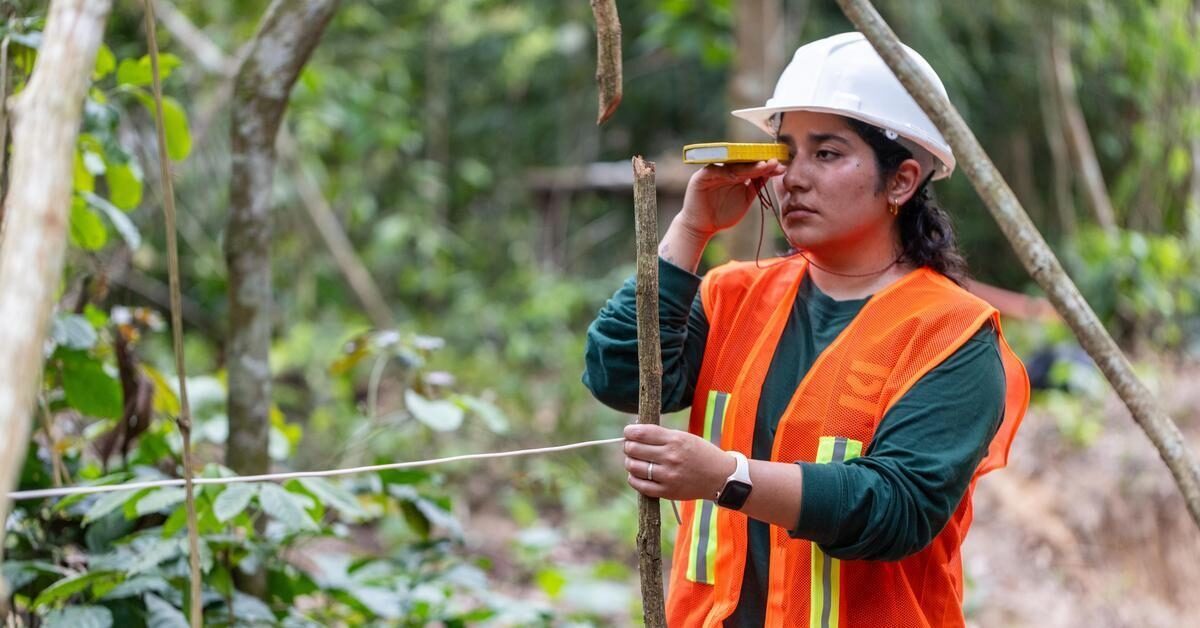When the Earthworm Foundation and Airbus launched Starling in 2016, the mission was ambitious: create a single, credible system to hold global companies accountable to their "No Deforestation" pledges.
The co-development successfully married Airbus's cutting-edge space technology (utilizing resolutions down to 30cm via satellites like Pléiades Neo) with the Earthworm Foundation's on-the-ground expertise and commitment to human-centric change.
Here are five key trends revealed by Starling, and how Earthworm Foundation is responding to each.
Trend 1:

The Shift: Initial efforts focused on large-scale clearing. Over time, as corporate commitments curtailed major industrial clearance, the dominant form of forest loss shifted to small-scale, sporadic forest degradation, often driven by smallholder farmers.
The challenge became one of detection accuracy, particularly in dense forest canopies. Starling's 2023 global accuracy assessment validated this success, confirming that 90% of all forest cover changes detected were accurate.
Over time, as corporate commitments curtailed major industrial clearance, the dominant form of forest loss shifted to small-scale, sporadic forest degradation, often driven by smallholder farmers.
The challenge became one of detection accuracy, particularly in dense forest canopies. Starling's 2023 global accuracy assessment validated this success, confirming that 90% of all forest cover changes detected were accurate.
Earthworm Foundation's Pivot 1:
Innovation via Cavally and Fair Data
To address this trend, Starling developed methodologies to detect understory disturbance. The successful pilot in the Cavally Classified Forest in Côte d'Ivoire demonstrates this pivot:
The Innovation: Starling uses high-resolution data and tailored algorithms to flag subtle changes in canopy structure, which is crucial for early detection. Michael Chemouny, Director of Optical Programs at Airbus, noted that this allowed Starling to "quickly detect and combat illegal activities," enabling ground intervention that led to an impressive 38,968 hectares of land preserved (Source: Airbus Intelligence).
- Current Relevance (Cameroon): This innovation is critical today as Cameroon emerges as a new cocoa deforestation hotspot, losing over 780,000 hectares of forest since 2020. This clearance, often involving understory clearing by poor smallholders (with 69% living below the poverty line), requires the precise, hyper-local monitoring Starling provides. Through partnerships, like the one with Fairtrade International, Earthworm is now using this data to strengthen cooperatives and directly provide smallholders with "deforestation risk data" to help maintain market access.
Current Relevance (Cameroon):
This innovation is critical today as Cameroon emerges as a new hotspot for cocoa deforestation, having lost over 780,000 hectares of forest since 2020. This clearance, often involving understory clearing by poor smallholders (with 69% living below the poverty line), requires precise, hyper-local monitoring, which Starling provides.
To address this trend, Starling developed methodologies to detect understory disturbance. The successful pilot in the Cavally Forest Reserve Landscape, Côte d'Ivoire, demonstrates this pivot:
Through partnerships, such as the one with Fairtrade International, Earthworm is now utilising this data to strengthen cooperatives and directly provide smallholders with "deforestation risk data" to help maintain market access.

The Shift: The team discovered that receiving a timely deforestation alert did not automatically trigger action. The challenge wasn't technology; it was the translation gap between a satellite alert and the necessary corporate response, such as engaging suppliers or addressing social grievances.
The challenge wasn't technology; it was the translation gap between a satellite alert and the necessary corporate response, such as engaging suppliers or addressing social grievances.
Earthworm Foundation's Pivot: Action Management and Local Proximity
Earthworm Foundation pivoted to integrate its supply chain expertise directly with the Starling output, acknowledging that "more than just creating an alert is necessary."
Integrated Approach: Starling is no longer just a map; it's a risk assessment and actionable data platform. Earthworm's expertise translates the satellite intelligence into meaningful insights for proactive supplier engagement. As the foundation notes, their commitment to having the majority of their team members "based in countries where raw materials are produced" ensures that the data is linked to the social and economic root causes on the ground (Source: Earthworm Foundation).
Customer Validation: Companies like FrieslandCampina explicitly highlight this value:
"Thanks to Starling, FrieslandCampina gains greater visibility into the supply chain and actively response to high risk areas. This is enabled by satellite monitoring, direct supplier engagement..." (Source: Airbus Intelligence).
- Customer Validation: Companies like FrieslandCampina explicitly highlight this value:
"Thanks to Starling, FrieslandCampina gains greater visibility into the supply chain and actively responds to high-risk areas. This is enabled by satellite monitoring, direct supplier engagement..."
"Thanks to Starling, FrieslandCampina gains greater visibility into the supply chain and actively responds to high-risk areas. This is enabled by satellite monitoring, direct supplier engagement..."

Earthworm Foundation pivoted to integrate its supply chain expertise directly with the Starling output, acknowledging that "more than just creating an alert is necessary."
The Shift: The fight against deforestation has become mandatory, propelled by major legislation like the EUDR.
Earthworm Foundation's Pivot: EUDR Alignment and Verification
Starling has been rigorously adapted to provide verifiable evidence required for market access under the European Union Deforestation Regulation (EUDR).
EUDR Compliant Features: The platform offers a defined due diligence process that includes: Geospatial validation of production plots, a Land Cover Map compliant with EUDR definitions, and a check of the deforestation status against the EUDR’s binding December 31, 2020, cut-off date. This allows companies to Export their EUDR results to complete their Due Diligence.
Expanding Commodities: Starling provides this verified solution across most EUDR commodities, including Palm oil, cocoa, coffee, rubber, pulp & paper, and sugarcane, with work ongoing for others. The goal is to support 100% supply chain traceability to the mill or plantation.
Expanding Raw Materials: Starling provides this verified solution across most EUDR commodities, including Palm oil, cocoa, coffee, Natural Rubber pulp & paper, and sugarcane, with work ongoing for others. The goal is to support 100% supply chain traceability to the mill or plantation.

The Shift: The focus is expanding beyond preventing "deforestation" to eliminating "conversion" and verifying "restoration," linking land use directly to climate and biodiversity goals.
The focus shifted to eliminating "conversion" and verifying restoration, linking land use directly to climate and biodiversity goals.
Earthworm Foundation's Pivot: Net-Zero and Landscape Projects
Starling has been rigorously adapted to provide verifiable evidence required for market access under the European Union Deforestation Regulation (EUDR).
Non-Forest Ecosystems: Starling's methodology is expanding to monitor the conversion of non-forest natural ecosystems (e.g., grasslands, the Brazilian Cerrado), addressing the "No Conversion" element of modern DCF policies.
Carbon and Restoration: The platform now explicitly supports Carbon accounting (via partnerships) and Forest conservation & Tree planting.
Airbus's Michael Chemouny stated that the vision is to;
...delve deeper into assessing biomass and its carbon storage potential and to expand the focus on reforestation activities, preparing Starling to support corporate net-zero commitments and Scope 3 GHG accounting standards.
Carbon and Restoration:
The platform now explicitly supports Carbon accounting (via partnerships) and Forest conservation & Tree planting.

Airbus's Michael Chemouny stated that the vision is to;
...delve deeper into assessing biomass and its carbon storage potential, and expand the focus on reforestation activities, preparing Starling to support corporate net-zero commitments and Scope 3 GHG accounting standards.


